
Donkey Kong (Arcade)
Donkey Kong
Platform: Arcade
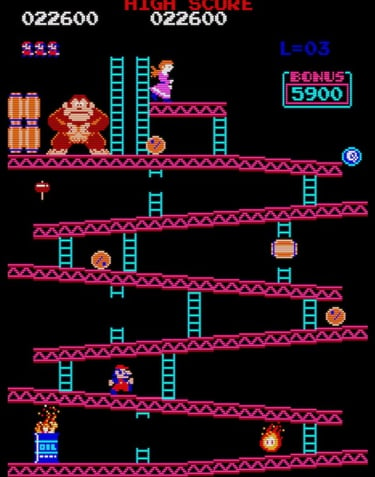

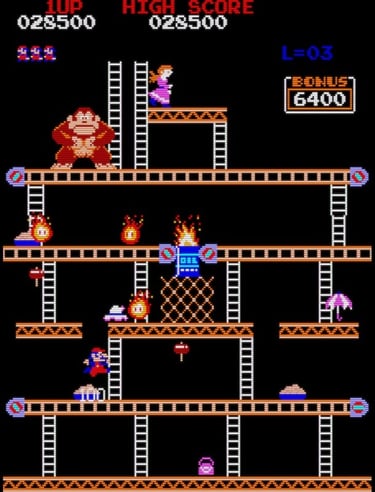

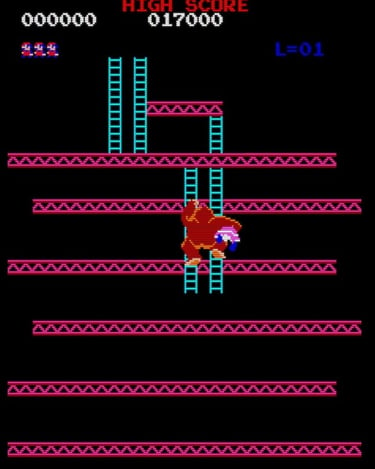

The game opens with just enough context to suggest the greater story.
For a genre more associated now with the likes of Bubble Bobble and Snow Bros., it’s perhaps odd to consider Donkey Kong as the first single-screen platformer of consequence—a game contrary to what would later define the category. Players must guide a plump mustachioed carpenter up a collection of platforms to save the fare Pauline from the clutches of a cantankerous ape. Why the gorilla has the girl is never explained; it’s simply do or die.
The lack of narrative substance is a touch ironic for a title often celebrated for being the medium’s (and certainly the arcade’s) first story-driven experience. "Man must save girlfriend from ape" might not be the loftiest of premises, but it did grant the game an added dimension—a sense of wherewithal and purpose—never quite captured before. In previous games, it was shoot for the sake of shooting, eat for the sake of eating. Games were meant to be accepted at face-value, no matter how inexplicable.
But saving the maiden is a timeless notion, written in the consciousness of every lad hoping to impress his own hopeful girl. And so, quaint as it might seem, this tale of man—a “Jumpman”—pitted against his nemesis was the added inspiration that got players to the top. And made Donkey Kong a classic.
Furthering these “questing” pretensions are the four stages themselves, each presented as a “rung” on a 100-meter climb, each a peak closer to the ultimate reckoning. The true end. The final battle between man and beast, knight and dragon, two forces at clash atop a mountain of hard steel. Each of these four trials forces new acts of daring, from shifting across conveyors and riding elevators to yanking rivets in a symbolic “rug-tugging” from beneath the beast’s stomping feet. It’s an epic, or a farce of one, reduced to a screen of four scenes.
Donkey Kong is indelibly compelling, beckoning players further up that tower until Kong is finally done and ladylove won. It’s a mission that transcends the admittedly stodgy controls and sometimes curmudgeonly gameplay, both of which bring death at the slightest infraction. Most controversial, however, is the game’s American release in which the original four-act structure is swapped for a more convoluted 2-stage, 3-stage, then 4-stage denouement. This forces a triple playthrough before every stage can be experienced. Maybe this stage shuffling increased American arcade earnings, maybe not, but it certainly undermined the narrative flow—making the game less a quest and more a gamut of disconnected challenges.
One wonders which legacy Donkey Kong best deserves—did it invent the single-screen platformer, or is it better seen as the inspiring precursor to the scrolling playgrounds of Super Mario Bros. and everything hence? Whatever the case, it's tough to deny that, without the big ape, the industry would be a different place.
Thanks to DK, gamers got their first damsel to save and villain to hate.--DA
Publisher: Nintendo
Developer: Nintendo, Ikegami
Release: 1981
Genre: Single-screen Platformer
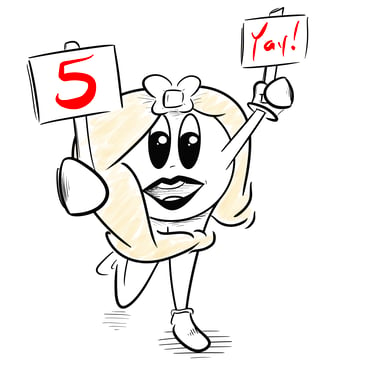

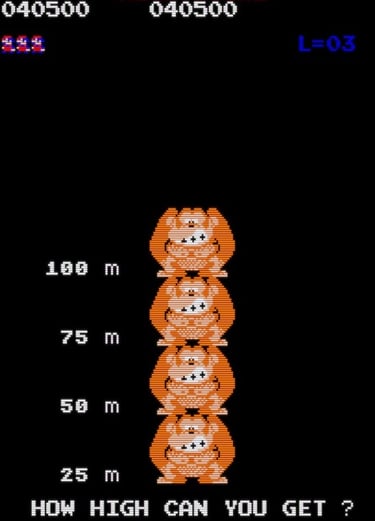


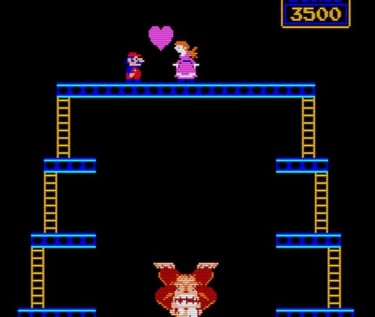
Donkey Kong? More like Donkey Gone! Anyway...the game was very expressive for its time, as seen on the great ape's dazed face.
Donkey Kong is the modernization of classic tales in which the knight must ascend the tower to save the damsel trapped atop.

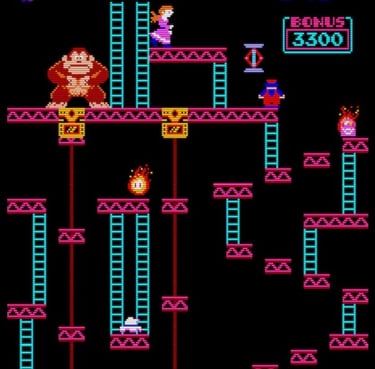
Unlike Super Mario Bros., the springs (jacks) in this game are not for jumping, but for avoiding.
Contact: lostnostalgiaproductions@gmail.com
Website: www.lostnostalgia.com
Like what we're doing? Please consider throwing us a dollar into our Patreon page's tip jar!


